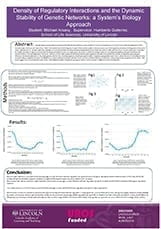By Michael Arsany //
Every living cell each contains a sequence of DNA, which encodes all the information required for life, and all the structures and reactions of the cell. In humans, approximately 80 trillion (80 million millions) cells in the body each contain an identical copy of this DNA sequence.
In humans, here are two copies of ~20 000 genes in every cell, each encoding a unique protein that serves a specific function, to form the tissues that assemble into organs of the body. The complete set of genes or genetic material is referred to as a genome.
This is the basis of all known living cells, which ultimately means that the genome sequence, and how it’s used by each cell to create a single or multicellular organism, is fundamental to understanding physiology (function), anatomy (structure), and pathology (disease) in all living species.
Anyone who claims to fully understand genetics in its entirety has probably not spent enough years studying deeply into the subject. I can confidently say that most genetics professors and geneticist by trade would verify that fact.
There are a number of ways to gain a deeper understanding however, and one example that I’ve found particularly enjoyable and beneficial, would be my project supported by the UROS programme, which I worked on over summer 2018. My project title is “Density of Regulatory Interactions and the Dynamic Stability of Genetic Networks: a System’s Biology Approach.”
This is a fancy way of saying that we’re using computer simulations to help understand genetic networks. The “density of regulatory interactions”, refers to how many of the genes in a given genome are dedicated to regulating other genes. Regulator genes are commonly referred to as transcription factors; they often work in tandem, having a highly variable effect depending on the specific combination of these transcription factor genes working together. The means that to truly understand the DNA sequence that sums to a whole genome, we must consider the genome as a whole.
To study something so complex in its entirety, we simplify the genetic network and use a computer programme (Matlab) to simulate a concise interpretation of a genome regulating itself (via transcription factors). In theory this model can represent any genome, and predict a number of possible states for a genome of any size.
The optimal number of transcription factors was determined to be 4% to 30% of genes in a whole genome. We hypothesise that a density in this range has been optimised for by natural selection, to produce a dynamic genome capable of effectively responding to environmental changes.
The most obvious hurdle I faced was being a complete beginner when it came to programming! I had to pick up knowledge of programming Matlab, alongside grasping the mathematical model behind the Matlab based programme, co-written by Dr Gutierrez.
I’d like to thank my brother (aspiring computer scientist), Humberto Gutierrez (my very patient and knowledgeable supervisor), and MatLab genius Bradley for help with a lot of the programming work I did early on, before I could collect data from our in silico model.
Once programming is learnt it’s a highly valued and transferable life skill, that spans the whole realm of scientific careers, and beyond. I found it fascinating to understand the principles of programming and parsing code like a computer would. This is a skill that I believe will continue to open doors for me in the future, and has given me valuable experience for any future work in the emerging field of bioinformatics. In addition to the specific programming knowledge, the whole UROS process has prepared me well for what to expect during my third year research project, and given me a positive impression of academic research.
*To view Michael’s project poster, please click on the thumbnail below:

